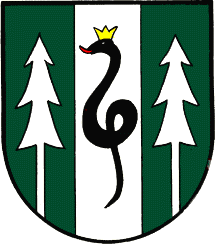Wundschuh: Difference between revisions
Jump to navigation
Jump to search
Knorrepoes (talk | contribs) m (Text replace - "|width="15%"|50 px|right |}" to "|width="15%"|50 px|right |}<seo title="Wappen, Gemeindewappen" />") |
Knorrepoes (talk | contribs) m (Text replace - "|width="15%"|50 px|right |}<seo title="Wappen, Gemeindewappen" />" to "|width="15%"|50 px|right |}<seo title="Wappen von Österreich" />") |
||
| Line 3: | Line 3: | ||
|width="70%" align="center" |'''Heraldry of the World<br>Civic heraldry of [[Austria]] - [[Austria|Österreichische Gemeindewappen]]''' | |width="70%" align="center" |'''Heraldry of the World<br>Civic heraldry of [[Austria]] - [[Austria|Österreichische Gemeindewappen]]''' | ||
|width="15%"|[[File:Austria.jpg|50 px|right]] | |width="15%"|[[File:Austria.jpg|50 px|right]] | ||
|}<seo title="Wappen | |}<seo title="Wappen von Österreich" /> | ||
'''WUNDSCHUH''' | '''WUNDSCHUH''' | ||
Revision as of 12:16, 8 November 2012
| Heraldry of the World Civic heraldry of Austria - Österreichische Gemeindewappen |
WUNDSCHUH
State : Steiermark
District : Graz-Umgebung
Origin/meaning
The arms were officially granted on ??
The arms are, in a way, canting. The name itself is a corruption of a medieval name, Wurmschach. "Schach" meant, in those days, a light wood or the fringes of the forest. "Wurm" means worm (literally), but also snake or even dragon. So, a snake appears between the trees.
Literature : Image provided by Karl Palfrader (k.palfrader@aon.at), MStLA 16 (1966), p. 70

